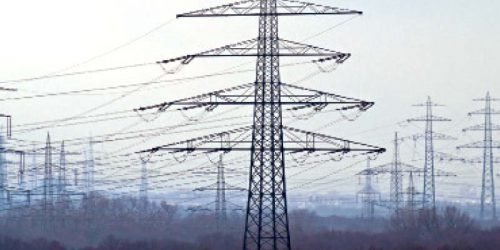Power production increased over 4% to 14,630 gigawatt-hours (GWh) in August 2020 with economic activity back to pre-Covid-19 levels in Pakistan.
Many industries, including the leading export earning sector of textile, cement and automobile manufacturing sectors, showed a notable recovery in their production in the month under review.
The electricity generation had stood at 14,052 GWh in August last year, according to the power sector regulator – the National Electric Power Regulatory Authority (Nepra).
“Due to revival of economic activities, power production numbers for August 2020 have shown growth,” Topline Research Deputy Head Shankar Talreja said while talking to The Express Tribune.
“This (economic recovery) is evident from cement and auto numbers (sales), which are up by 6% and 16% respectively, in August compared to the same month of last year,” he said.
Similarly, the textile industry – the largest export earning sector – has scaled up production to pre-Covid-19 levels of full capacity as a significant improvement in the containment of the pandemic in the country encouraged world buyers to partially divert their orders to Pakistan’s manufacturers, an industry official said.
“Textile industry’s utilisation is hovering north of 90% with export order books full till November-December for apparel, home textile, hosiery and denim,” said Insight Securities.
Hydel power production remained the largest source of electricity with availability of water in dams amid heavy rainfall during the month.
However, the gas crisis prompted authorities to produce power by using expensive fuels like diesel and furnace oil during the month.
JS Research said with a contribution of 37% (5,470GWh) to the total generation, hydel power remained the leading source of electricity during the month.
This was followed by RLNG (re-gasified liquefied natural gas) and coal, contributing 21% (3,058GWh) and 17% (2,530GWh) respectively.
“Cumulatively, the leading three sources were used to generate about 76% of the aggregate power,” the research house said.
With a 56.6% year-on-year increase, furnace oil-based production saw the highest percentage increase. However, its share in the aggregate production remained low at 5%.
Coal-based generation saw a 35% increase compared to the same month of last year, it said.
Power cost
“The fuel cost per unit saw a decline of 15% year-on-year to Rs4.08/kWh in August 2020. This decline can mainly be attributed to a 39% decline in the cost of production using RLNG,” JS Research said.
The Central Power Purchasing Authority (CPPA) has proposed “an increase of Rs0.98/KWh over reference fuel charges i.e. Rs3.20/kWh,” according to Nepra. The authority is scheduled to conduct a hearing to consider the proposed increase on September 30.






